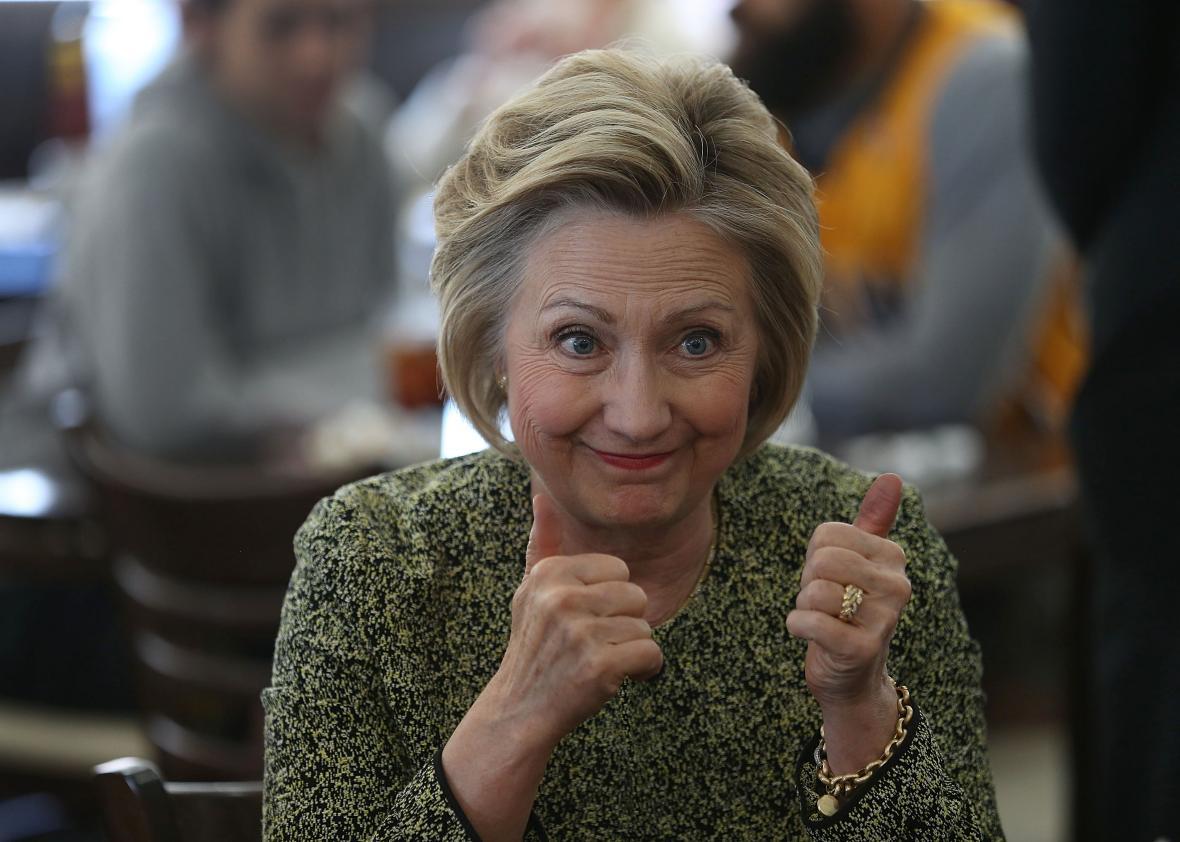This election season has broken fundraising records for female donors. According to a Crowdpac analysis of Federal Election Commission files, 43 percent of all contributions to federal candidates so far this season came from women, a higher proportion than ever before. And since 2010, when the Citizens United decision opened the floodgates for massive super PAC donations, the proportion of women’s donations to those organizations has increased from 1 percent to 20 percent of all super PAC contributions. These figures only cover individual contributions greater than $200, which must be itemized in reports to the FEC.
The New York Times reports that Hillary Clinton, unsurprisingly, has far surpassed every other presidential candidate in history when it comes to getting money from women. They’ve provided almost 60 percent of the candidate’s individual contributions, $70 million in all. Clinton has near gender parity in her roster of bundlers, who fundraise among wealthy friends and business connections; just about a third of Barack Obama’s campaign bundlers were women.
Certainly, the prospect of the country’s first female president has galvanized many donors who wouldn’t normally contribute to a political candidate. But it’s likely that some have been motivated by the Republicans’ war on Planned Parenthood and the misogyny of Clinton’s presumptive general-election opponent, Donald Trump. In the three days immediately following Trump’s claim that Clinton was playing the “woman’s card” and wouldn’t get 5 percent of the vote if she were a man, the Clinton campaign enjoyed its best fundraising run of the season, raking in $2.4 million from 118,000 people, 40 percent of whom were new donors.
Women are giving more money on the right wing, too. The Times reports that the Koch brothers’ Freedom Partners, whose membership fees start at $100,000, has attracted a growing proportion of women to its annual donor gathering. Last summer, 40 percent of the participants were women.
Still, men have contributed around two-thirds of federal candidate donations this year. Women are still more likely to donate to causes and nonprofits than to any political fundraising effort. A 2014 report from the National Council for Research on Women noted that the Supreme Court’s Citizens United ruling may have actually caused the gender gap in political donations to widen, in part because women are more likely to donate to candidates and party committees, which limit donations, than they are to support super PACs. Still, the decision that lifted a major barrier to gargantuan donations had a larger proportional effect on women: In the two years after Citizens United, giving to super PACS increased by a factor of 12, but donations from women increased by a factor of 20.
As women make strides in entrepreneurship and business leadership, one line of thinking goes, they’ll start donating more money to political campaigns. Some speculate that the rise in female donors we’re seeing in 2016 is the result of a trickle-down effect that began decades ago, when now-retired women began joining the workforce and ascending to the boardroom in greater numbers. Other causes are more cultural—wealthy families that funded elections past were most often steered by men; now, women are taking the helm and directing their own money, or their spouse’s, toward their preferred candidates or party.
The wealth gap isn’t the only explanation for gender differences in political giving—after all, across nearly every income level, women donate more money to charitable causes than men. Even when women make more money and have the power to donate it where they see fit, there are social barriers that discourage them from putting funds into politics. “Even when women assume senior posts at their companies, they are more reluctant to ask their colleagues for contributions to candidates,” the Times reports. “Several donors described a familiar worry among their female friends about rocking the boat among male colleagues, or offending people with different political views.” If those social cues and fear of backlash are enough to keep women from fundraising for a political candidate, one shudders to think of the forces pushing against women who consider becoming one.
